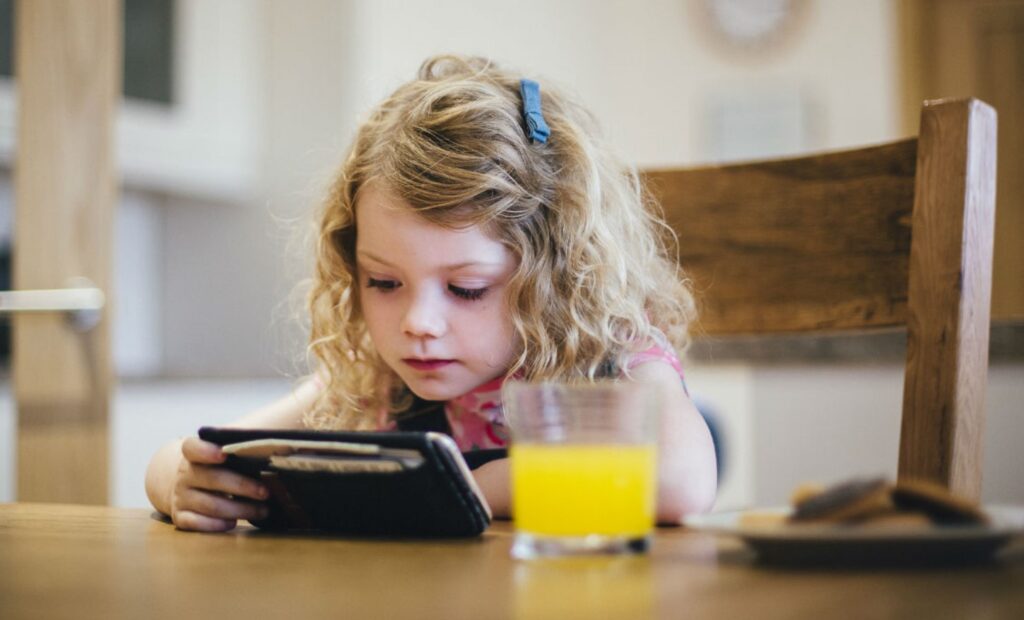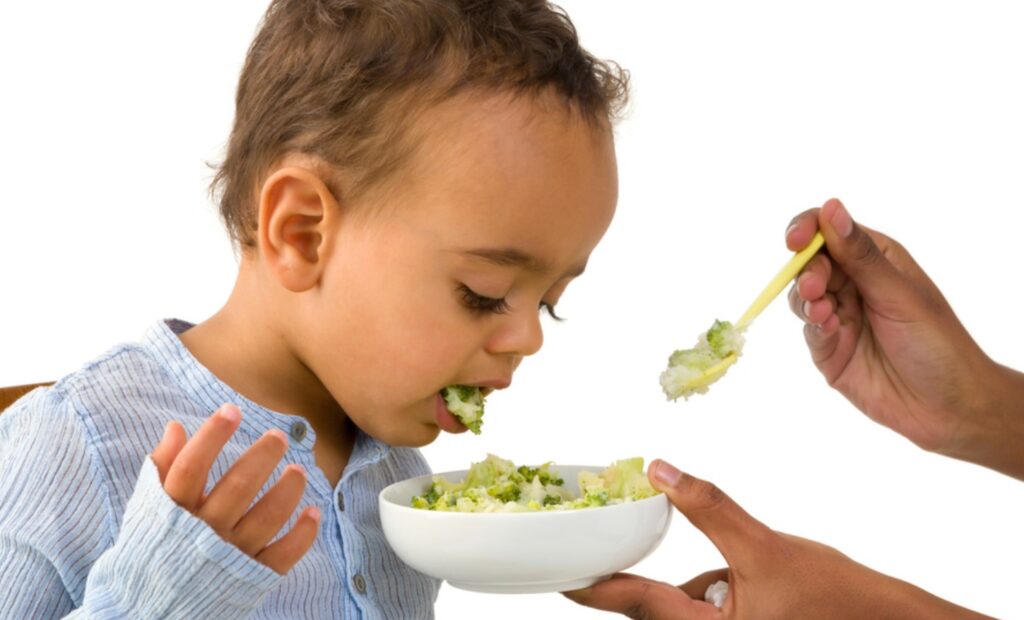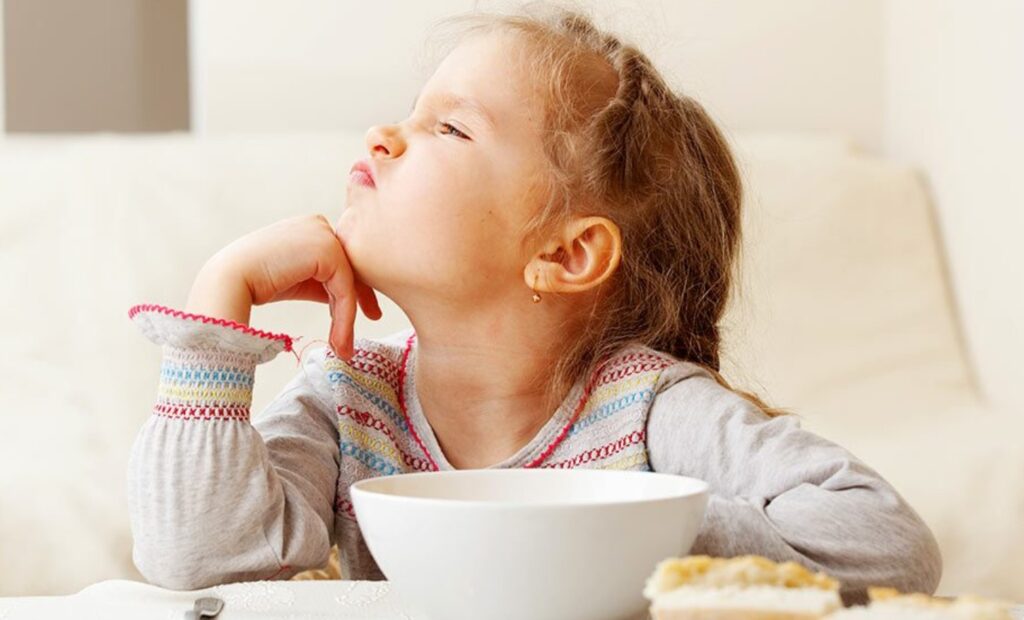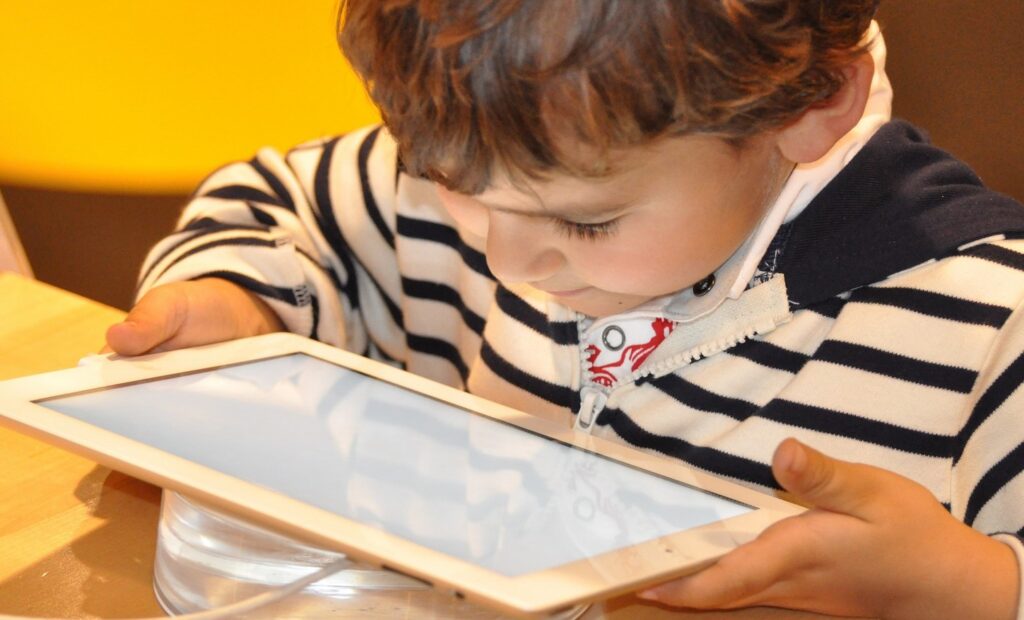In this article, we like to evoke the food metaphor to guide us in our consumption of screens. But in practice, what does it mean? First of all, we know that it is not necessary to sit down with friends, or even alone. We can eat a sandwich while walking or have a ready-made diet in our refrigerator. Yet in all cultures, food has been the subject of many rituals by which the human being has socialized this activity so as to make it a moment of creativity and sharing. This is what we claim that it is possible to do with the screens.
To understand it, take nine important areas of food rituals and see what consequences this can have for the organization of our screen consumption, individual, family and social.

- First of all, moms, and dads alike, know that it’s not a good idea to put steaks, fries or spaghetti in your baby’s bottle. This does not mean that these foods are toxic, because they would be toxic at any age and should be banned from our diet. This means that the baby’s digestive system is not suitable. In the same way, the baby’s mental system is not adapted to take advantage of the screens. The young child does not have the capacity for sufficient distance, neither in relation to the content of the images nor in relation to the emotions they arouse in him.
- Secondly, in all cultures, children are invited to respect the rhythm of meals, that is, to eat at a fixed time. In other words: “We do not nibble all day. In the same way, avoid nibbling our screens all day long. As an adult, let’s take a look at the times we visit our screens and invite our children to do the same. As soon as we introduce a screen into a child’s life, let’s do it by ritualizing right now, and for that, let’s give it a constant time frame from one day to another, for example from 5.30 pm to 6 pm or from 6 pm to 7 pm and let us fix this moment before an activity that can not be moved, for example, the bath or the evening meal.
Source: The ASHA Leader - We all know that one of the pleasures of the restaurant is to be able to choose! Exercising one’s ability to choose from a supply of food is more satisfying than simply eating what is served. In the same way, let’s make sure that our child has a small DVD library, two or three titles are enough so that he can choose to look at one or the other according to the days. He will perceive himself more easily as a citizen of the world. In addition, by watching the same programs several times, he will understand them better.
- We do not eat in the dish but on a plate. The plate represents for each of us a portion of food, and it is only after finishing that we can possibly be entitled to a second portion. The problem of television, but also of Netflix, YouTube and all access providers is that it offers the child a continuum of programs without any interruption between each. A little as if the plate of the child filled automatically as soon as he emptied it. It is obvious that in these conditions, many would eat too much! The DVD not only allows the child to watch the programs that interest him, but also to watch a program that ends and after which it is possible to move on to another activity.
Source: FirstCry Parenting - We know that eating together is often more enjoyable than eating alone. Privilege in our children the activities of split-screen. Let’s establish the ritual of a feature film watched together once a week, and prefer video games that are played by many, preferably in physical proximity, to those we play alone.
- No child or teenager is allowed to take a package of cookies to their room for overnight use. Let’s avoid the same way he takes his mobile phone to his room. And for that, let’s fix it as a family rule that everyone leaves their mobile phone every evening on the breakfast table to find it the next morning.
Source: Hands on OT Rehab - Everyone knows that during a meal, comments on food are welcome. This allows you to talk a bit about the dish you eat, but also about the ones, similar or different, that you have eaten in other circumstances. And the conversation comes alive! In the same way, let’s talk about screens.
- Finally, let us not forget the great change that has occurred in our relationship to food in recent years. While previously, the focus was on the need to eat less, today it is put on the need to eat better. Of course, some of us eat too much, but they are not necessarily the biggest! Obesity can be linked to many other factors. However, what is widely demonstrated is that we all eat poorly, and even very badly… It’s exactly the same with the screens. Of course, some people consume too much. These are not necessarily the ones that go the worst. It is possible to consume a little screen, but in a way detrimental to social life and mental balance, including overexposing its privacy or engaging in hateful practices. But it is also possible to make screens a creative and socializing use, especially through social networks and video games.

The problem for most of us is not the time we spend on screens, it is the fact that we have often repetitive activities, stereotyped, not very creative and not very socializing. It has been shown that people in pain, whether psychic suffering and / or social suffering, are often the ones who use digital media the least.
Screen Time Limits
Having read all the tips given above, many parents would wonder how are these tips practical and how can they implement screen time limits for kids. Well, the smart solution they can opt for are the various apps. There are a well know application to limit screen time of kids. With these app in hand, parents can manage their kids’ screen time without much of a hassle. These app offers screen lock scheduler, remote screen lock options, app timer, Time bank feature and app blocker etc. There are many other valuable features that you can benefit from. So what are you waiting for now? Give the FamilyTime app a free try now. You can get the trial version of the app from the app store on your phone. Go now to Google Play store or iTunes depending upon the operating system of your phone and install the app from there in a few simple steps.
It is for all these reasons that we invite to socialize our relationship to screens exactly the same way that we socialized our relationship to food. In either case, we will gain both personal balance and family serenity, and our children will learn without crisis and without pain good management of screens.













